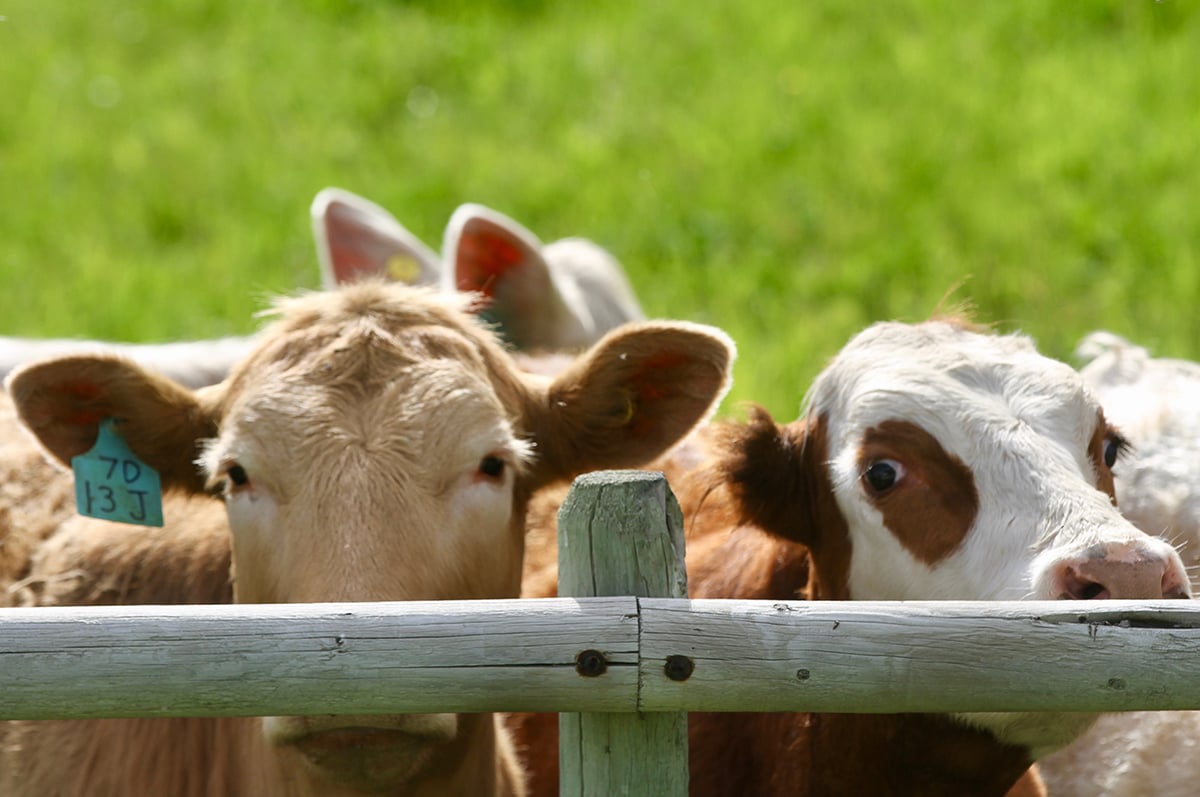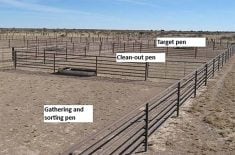CALGARY – They may not look like the big, beefy cattle usually seen roaming the range, but the little Japanese Wagyu is measuring up where it counts in carcass tests in Canada and the United States.
Carcass tests recently completed at Lethbridge Research Station using Wagyu bred cattle topped North American bred cattle with 82 percent of the Wagyus grading triple A, the highest designation in the Canadian grading system.
A total of 85 animals were tested at Lethbridge. Of these, 63 were continental European and British cross animals. The remaining 22 cattle were three-quarter Wagyu, offsprings of fullblood Wagyu bulls bred to half Wagyu females, said animal scientist Priya Mir.
Read Also

Feeder market consolidates at historic highs
For the week ending Sept. 6, Western Canadian feeder cattle markets were relatively unchanged compared to seven days earlier.
Animals were fed until they were about 17 months old with an average slaughter weight of 1,100 pounds. They were killed at a Lethbridge processing plant and were evaluated by Agriculture Canada graders.
In Japan, where the Wagyu is raised to produce a highly marbled meat, average time on feed is 40 months to bring them up to the desired weight and marbling level, said Mir.
Ribeye area for the Wagyu crossbreds in the test completed in September was 68 square centimetres. Average back fat among the Wagyus was 11.1 millimetre.
On the 11 percent of the continental crosses who graded triple A, back fat averaged 14.5 mm. The longer cattle are on feed, the more fat is laid on, said Mir.
Traces of fat in muscle tissue, known as marbling, is related to flavor and juiciness of meat. Outside fat such as back fat is considered waste.
Shear strength tests conducted on Wagyu meat showed less force than average was required to cut through. Shear force tests are a standard measure of tenderness.
Studies on a new crop of animals have already begun.
Meanwhile, tests on Wagyu cross cattle at Washington State University have expanded to sire evaluation.
Best of the breed
The university wants to know which bulls in the Wagyu breed are producing better carcasses, said animal scientist Jerry Reeves.
“Certain sires appear to produce superior carcasses to others. Carcass traits are highly heritable.”
About 20 sires are involved in the Wagyu program there. Most of the cattle involved in the carcass tests have been crossed with Angus because that breed is known to deposit fat in muscle tissue.
The animals at Washington State University are fed a barley grain and roughage diet for 200 to 365 days.
Carcass tests have shown less back fat on the Wagyu strains compared to North American cattle placed on long feeding regimens.
“We’re finding the back fat is coming from the domestic cattle. The Wagyu cattle seem to take the back fat off,” he said.
Reeves said there is a place for these animals in the American meat chain. Most of the Wagyu carcasses in the U.S. are sold to expensive restaurants or to Japanese buyers.
Animals coming out of these lengthy feeding programs don’t fit well into the mainstream markets. Grades for their lean meat yield are lower than average and the overweight carcasses often result in packer discounts for oversized, fat cattle.
“Our goal is to try and develop this market and send this meat to Japan and the high-end restaurants,” he said.
Last year, the U.S. sold about one million carcasses to the Japanese.
To further expand the Wagyu gene pool in the U.S., about 80 animals were imported in five shiploads from Japan. Formerly, Japan refused to allow animals out of the country to protect its domestic beef industry.















